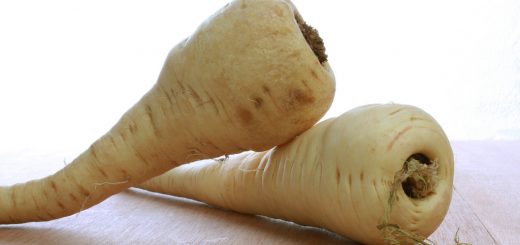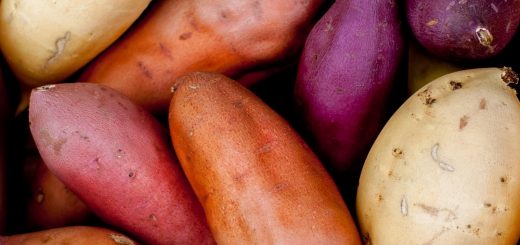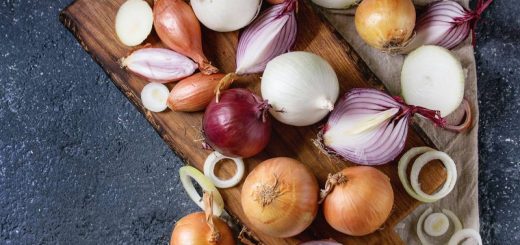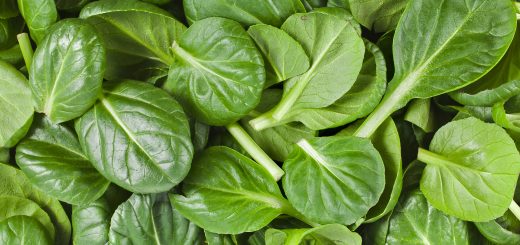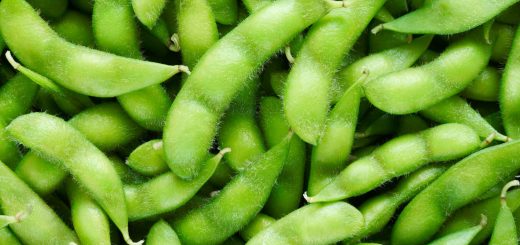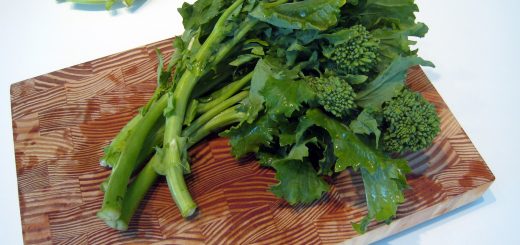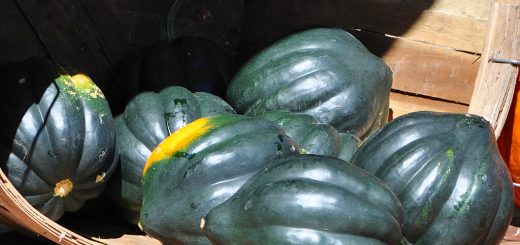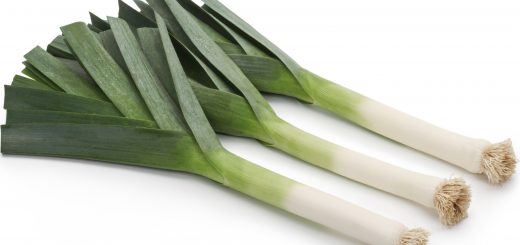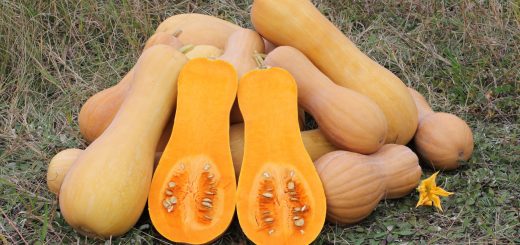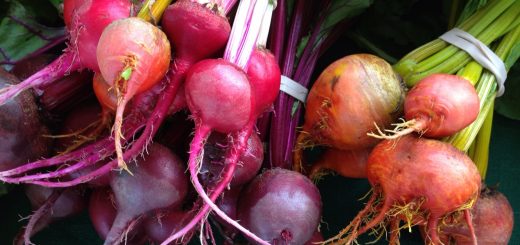Category: Featured Produce
Sweet Potatoes
Sweet potatoes are native to Central and South America and are one of the oldest vegetables known to man. They have been consumed since prehistoric times as evidenced by sweet potato relics dating back 10,000 years that have been discovered in Peruvian caves. (more…)
Onions
Onions are part of the allium family of vegetables and herbs, which also includes chives, garlic, scallions, and leeks. Allium vegetables have been cultivated for centuries for their characteristic, pungent flavors and for their medicinal properties – these vegetables have been linked to a lower risk of certain cancers, including stomach and colorectal. A nutrient-dense food, onions are low in calories and high in beneficial nutrients like vitamins, minerals, and antioxidants. (more…)
Spinach
Calorie for calorie, leafy green vegetables like spinach provide more nutrients than any other food. Spinach is thought to have originated in ancient Persia. Spinach made its way to China in the 7th century when the king of Nepal sent it as a gift to this country. Spinach has a much more recent history in Europe than many other vegetables. It was only brought to that continent in the 11th century, when the Moors introduced it into Spain. In fact, for a while, spinach was known as “the Spanish vegetable” in England. (more…)
Edamame
The Japanese name edamame literally means “twig bean”, and is a reference to the short stem attached to the pod. This term originally referred to young soybeans in general.
Over time, however, the prevalence of the salt-boiled preparation meant that the term edamame now often refers specifically to this dish. Typically, the pods are boiled in water together with condiments such as salt, and served whole. To eat, you simply squeeze the beans out of the pods with your fingers, or your teeth! (more…)
Broccoli Raab
Commonly known in the United States as broccoli raab, it is truly a vegetable with many names around the world. A few of the many names are raab, rabe, rapa, rapine, rappi, rappone, turnip broccoli, taitcat, Italian or Chinese broccoli, broccoli rape, or broccoli de rabe. (more…)
Acorn Squash
Although considered a winter squash, acorn squash actually belongs to the same species as all “summer” squashes (such as zucchini and yellow squash). The most common variety is dark green in color, but newer varieties can be yellow, white, even variegated. As the name suggests, its shape resembles that of an acorn. It is a good candidate for winter storage, keeping several months in a cool dry location. Squash can be refrigerated, but it will deteriorate quickly and should only be refrigerated 1-2 weeks. (more…)
Leeks
Leeks, known scientifically as Allium porrum, are related to garlic, onions, shallots, and scallions. Leeks look like large scallions, having a very small bulb and a long white cylindrical stalk of tightly wrapped, layered leaves. With a more delicate and sweeter flavor than onions, leeks add a subtle touch to recipes without overpowering the other flavors that are present. (more…)
Butternut Squash
Butternut squash is a winter squash belonging to the Cucurbitaceae family of field pumpkins. It has a sweet, nutty taste similar to that of a pumpkin. It has tan-yellow skin and orange fleshy pulp with a compartment of seeds in the bottom. When ripe, it turns increasingly deep orange, and becomes sweeter and richer. (more…)
Beets
Beets are filled with good things. High in fiber, vitamins A and C, and surprisingly, more iron than most other vegetables, including spinach! They also contain calcium, potassium, phosphorous, and folic acid. The pigments that give beets their signature coloring are strong antioxidants. (more…)
